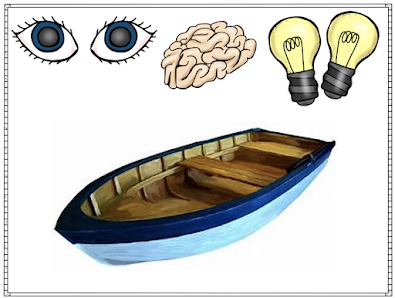Are STEAM Challenges really worth the time?
This is a question I've asked when I see a STEAM activity or challenge. I'll be honest. I've heard of them and the activities look fun but how am I supposed to do that and teach my curriculum? Am I right?
Let's take a look at a simple STEAM Challenge that most of us have seen before:
Use foil to make a boat that can hold money.
It seems a little pointless right? Like, okay-neat, then what? In a nutshell, here's why it's actually a really purposeful activity to use in the classroom.
To begin an activity like this, you start by first doing a see, think and wonder.
Students should look at the boat and tell what they see. For example, they see it has sides and a floor.
Students should think about why the boat has these parts.
Then, they can begin to wonder about things like why does a boat have these parts and how does it help the boat?
This skill is an important skill to develop critical thinking. We ask kids to critically think about the text they read and the math problems they solve all of the time. It's a muscle that needs strengthened and this is a fun way to engage them in that act.
A see, think, wonder can be completed as an individual task first and then students can share their thoughts as a small or large group. You can also do think, see, wonders using only conversation and no individual think time.
After students practice developing their critical thinking skills you can give them their materials and their challenge -or- you can model how to create the boat using foil. I think all of this depends on the age and abilities of the kids you're teaching.
Once, students create their boat then they get to test it out! This is where a little Growth Mindset Practice comes in! I like to start having these conversations at the beginning of the school year but you can start ANYTIME!
As students create their boat, they will get the opportunity to TEST it out. They will identify if their design works or not. Chances are it will have a flaw, which is great! Kids can then look at it and think things like, "What isn't working? What do I need to add?" More practice with those critical thinking skills.
If students get it right away, great! Now, let's add a little weight. Give students coins or another manipulative to set inside their boat. How much weight can their boat hold? Does it sink when weight is added? Why? If it works again, amazing! Now let's see if we can design a boat that's in a different shape. Will the boat still float? Will it be better?
The thought processes that are involved in STEM Challenges are invaluable.
To incorporate content into this challenge students can:
- Read a book about how boats work
- Write about their stem process (How to writing)
- Write a story about someone who spent a day in their boat.
- Weigh the items in their boat
- Compare the number of items in classmates boats
- Identify a problem they were having and how they found a solution - or tried to find a solution
- Draw a picture and label




































